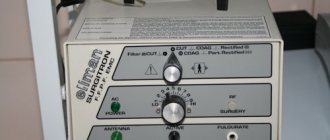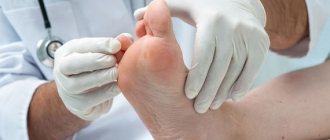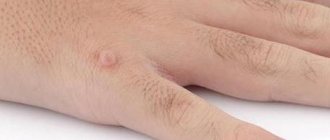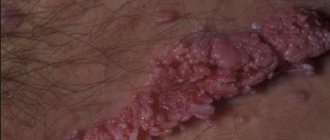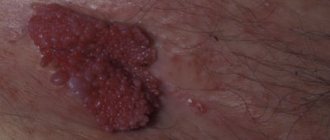- 427
- 18-05-2021
- Author: Mysekret Team
- 0
Tattoos on the bodies of men and women have not surprised anyone for a long time. Today it is part of the image, an opportunity for self-expression, a decision to imprint something important on the body. Despite the fact that it is recommended to approach the choice of tattoo responsibly, many decide to apply a design spontaneously, which they later regret. Fortunately, the ability to completely remove a tattoo has existed for a long time.
We tell you what tools and methods modern tattoo artists use to remove tattoos.
Reasons for removing tattoos
Sometimes it happens that a person needs to get rid of a permanent tattoo. Situations can be very different: you don’t like the image or its location, a person simply stops liking the idea of wearing a tattoo, sometimes health doesn’t allow it - in a word, there are many reasons. What is the right thing to do to get rid of a tattoo correctly?
It must be said right away that this is not so simple. And your feelings will not always be pleasant. Therefore, you will have to be patient - because beauty requires sacrifice.
Coverup or tattoo covering
Today there is no absolutely safe and painless method for removing body tattoos. Therefore, before turning to surgical methods, you should try to correct or camouflage the tattoo.
To carry out such a procedure, you need to find a good master who will help you choose the best alternative to the old body image. It will not be difficult for a tattoo artist to change a simple design made with blue or black paint. When adjusting or covering-up a complex, multi-detailed composition made with rich yellow or green coloring compounds, the master will have to spend a lot of time and demonstrate his imagination.
Often, to remove an old, boring or poorly executed tattoo, a method such as repainting is used. To do this, a complex ornament is applied over the old image with black dye, overlapping individual elements of the old design with flesh-colored lines.
However, it should be noted that not every body image can be corrected or camouflaged: corrections can only be made to a drawing that has lost its former brightness over time or is made with weak, intermittent lines, using too pale dyes.
Dermabrasion – mechanical peeling
- Skin exfoliation
- Suitable for small size tattoos
This method is used most successfully when removing tattoos of relatively small sizes. Often this operation is performed to remove skin scars, age spots, or wrinkles that form when a person is exposed to prolonged exposure to sunlight.
Contraindications
- Pustular skin diseases
- Epilepsy
- Somatic pathologies of the body
- Tendency to keloid scars and chloasma
The essence of the method
- skin polishing
- removal of the epidermis and dermis layer
- restoration of skin and its properties
Stages
- Preparatory.
- Anesthesia.
- Grinding.
- Post-procedural activities.
Preparation
You do not need to take any medications before the procedure. You should especially avoid taking birth control medications and anti-acne products.
The first group of drugs prevents the removal of fluid from the body. If this rule is violated, age spots may appear on the skin.
At the initial stage, medical instruction and informing the patient about how to behave correctly will play a big role. According to statistics, if complications occur during such operations, this is due precisely to the patient’s incorrect behavior. A consultation conducted competently and successfully will help save a person from the unpleasant consequences of the procedure.
Anesthesia
If the drawings are small in area, then local anesthesia will be used. But anesthesia is necessary when removing larger or very large-scale drawings.
Grinding
The skin is thoroughly cleansed. Next, they take a moving cutter with diamond chips or just a wire brush and use them to remove the surface layer of the dermis, which can sometimes be up to 1.5 mm. If it is necessary to remove deeper layers of skin, then a special device is used for this purpose - an electrocautery.
Recently, the most commonly used procedure for dermabrasion is micro-resurfacing. With this method, the body image is removed by exposure to solid-phase fine filler. It is supplied under a certain pressure and acts on the skin.
Post-procedural activities
- skin restoration 1-2 weeks - applying antibacterial ointment every day
- care from 3 to 6 months, wash the healed wound with a solution of antibacterial soap and protect from direct and prolonged contact with sunlight
Flaws
- the appearance of scars and age spots
- skin atrophy
- if the paint is deep - many procedures
Advantages
- Low chance of complications
Physical tattoo removal with lasers
Using the laser method, you can get rid of almost any pattern - no matter how big or small, simple or complex, bright or not very bright, rich or not. Using a laser, you can not only reduce, but also correct any design in a tattoo.
With the development of modern technologies, surgery to remove a tattoo using a laser beam has become almost painless and quite fast. In addition, it has become completely safe.
Nowadays, two options are used for removing body images using a laser beam - laser vaporization exfoliation and selective photocavitation.
Recovery after the procedure
First of all, you should provide the treated area with maximum rest. Try to go outside less often, and if you need to go for a walk, do not forget to apply sun cream to the area of the drawing; if possible, cover this area with a cloth. You should also not visit a solarium, baths, saunas, swim in open water, or overdo it with physical activity.
If necessary, the tattoo is treated with Miramistin to prevent infections. If side effects start to appear, you can try to manage them symptomatically, such as using dry ice or a cool compress for swelling and bruising.
Ruby lasers
- Black, green, blue tattoo color
- Shallow tattoos
- Not suitable for red and deep tattoos
As a rule, ruby lasers of the Q-switched standard are used, operating at a wavelength of up to 694 nm in an ultrashort pulse mode (10-30 nanoseconds). This wavelength and pulse duration is usually sufficient to destroy the chromophores of cells containing the dye, while cells that do not contain foreign dye pigments remain intact. Complete breakdown (lysis) of destroyed cellular chromophores occurs within 3-4 weeks, so repeated laser exposure is carried out no earlier than after 3-6 weeks.
To completely remove tattoos using a Q-switched ruby laser, 4 to 10 sessions are required. Each procedure uses a light beam with a diameter of 5 mm and radiation with a power of 6 to 10 J/cm (depending on the color of the body image and the number of previous sessions).
Alexandrite lasers
- Superficial tattoos
- Faster than a ruby laser
Neodymium lasers
- Universal – any depth, saturation and color of tattoo
- High speed
- Patterns are destroyed - the skin is not affected
- Painless and safe
There are several types of neodymium lasers - infrared, green, yellow and red.
Infrared neodymium lasers
- Blue, green, black tattoos
- Sometimes scarring and pigmentation
Green neodymium lasers
- Orange, yellow, red tattoo colors
- Various depths
- Difficult at great depths
Yellow neodymium lasers
- Pale blue and light blue tattoo colors
- Superficial tattoos or those located in the dermis
Red neodymium lasers
used to remove blue or green tattoos.
All described laser systems are suitable for use on any type of skin, since they do not have a significant effect on the skin, but only separately destroy the dye grains present in its layers. During the procedure, the patient experiences virtually no pain, which is a clear advantage of using a laser system for producing superficial and deep body images. Using laser technology, you can also correct an unsuccessful pattern on the skin, for example, make it lighter or soften contrasting shades.
Are there any side effects?
There are practically no negative consequences after laser tattoo removal. Immediately after the procedure, swelling and redness may appear in the treatment area. After a few hours, these symptoms go away on their own.
It is very rare to experience an allergic reaction to the laser. This side effect occurs in people who are allergic to sunlight. After the procedure, the skin turns red and swelling appears. This allergy can be controlled by taking antihistamines.
Before the procedure, you must undergo a preliminary consultation and warn the specialist about allergies.
Plasma torch
At the beginning of 2003, I had to observe how some people tried on themselves an “interesting” method of removing tattoos using a plasma torch operating on the principle of an electrocoagulator. But after some time after the restoration of the skin, strong keloid scars formed in place of the removed tattoo patterns. To smooth them out, people had to go to medical centers that use the most advanced tattoo removal technology available today—laser. By the way, laser is very widely used for the treatment and correction of many skin diseases.
This method involves burning the skin with plasma to the depth of the tattoo: the work is done along the contours of the image, while no disfiguring scars remain on the skin after the procedure is completed and the wounds have healed.
A significant disadvantage of this method is the rather long healing process of the skin; in addition, the restoration of skin pigment occurs slowly (sometimes this takes up to 10-12 months).
Factors influencing the success of tattoo removal
Factors that have the strongest influence on the speed of tattoo reduction are presented in the table
| Factor | The difficulty of getting rid of tattoos |
| Age of the drawing | The older the tattoo, the more difficult it is to get rid of it. |
| Human skin color | The lighter a person’s skin, the easier it is for him to remove a boring pattern. |
| Tattoo location | The easiest tattoos to remove are the legs, arms, chest and buttocks. |
| Color of ink used | Tattoos made with colored ink are the most difficult to remove. And it’s easier to have plain ones, and made in black, blue, and red colors. |
| The rate of cell regeneration in a particular person | The faster the cells regenerate, the faster the tattoo can be removed. |
Based on the above, the most difficult thing to remove is a tattoo that was made long ago by a dark-skinned person with colored ink.
It is best to remove recently filled tattoos with a laser. It may take just 1 session for the pattern to become virtually indistinguishable. Sometimes the procedure needs to be repeated. An experienced tattoo parlor artist will not only select the optimal removal method, but also recommend the most advanced equipment.
Superficial tattoo peeling
This peeling procedure is usually carried out by exposing an area of skin to fruit acids. This affects the keratinized cells in the upper layers of the skin. This procedure is indicated for many skin diseases: dermatitis, excess pigmentation, keratosis or senile skin defects.
Flaws
- is not a universal remedy
- multiple removal procedures
- uneven effect of fruit acids on the skin => shorter appearance, which is difficult to combat
Contraindications
Despite the safety of laser exposure, it is recommended to consult a doctor before performing the procedure. This precaution is due to the fact that in the presence of certain diseases, it can cause serious complications. These include:
- skin injuries - wounds or cuts, as well as inflammatory or systemic lesions;
- skin cancer;
- varicose nodes in the treated area, thrombophlebitis;
- decompensated diabetes;
- cardiovascular pathologies;
- infectious lesions;
- epileptic seizures.
In addition to complete contraindications to such a procedure, there are also certain restrictions. Do not remove tattoos from areas that are freshly tanned or treated with gold threads. It is contraindicated in case of taking tetracycline antibiotics, hormonal contraceptive pills and other photosensitizing medications. The procedure should also be postponed during pregnancy or breastfeeding, as well as until the age of 18 years.



